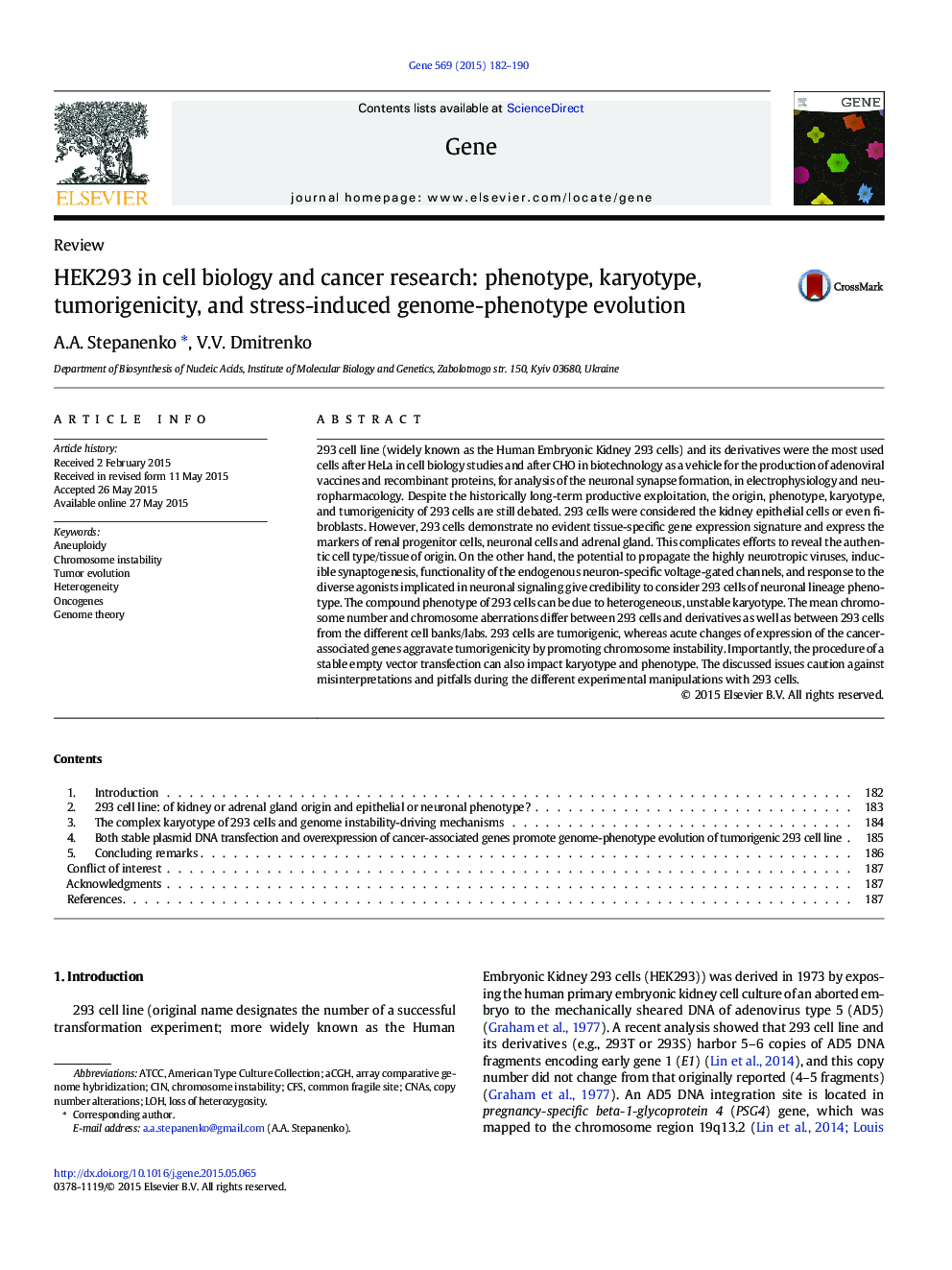| کد مقاله | کد نشریه | سال انتشار | مقاله انگلیسی | نسخه تمام متن |
|---|---|---|---|---|
| 2815577 | 1159879 | 2015 | 9 صفحه PDF | دانلود رایگان |

• 293 cells have characteristics of neuronal cells and may be of adrenal gland origin.
• A highly aberrant karyotype makes transcriptome of 293 cells severely deregulated.
• 293 cells are tumorigenic, forming tumors with varying frequency/size among studies.
• The diverse cancer-associated genes promote chromosome changes in 293 cells.
• A procedure of plasmid DNA transfection can impact genotype and phenotype.
293 cell line (widely known as the Human Embryonic Kidney 293 cells) and its derivatives were the most used cells after HeLa in cell biology studies and after CHO in biotechnology as a vehicle for the production of adenoviral vaccines and recombinant proteins, for analysis of the neuronal synapse formation, in electrophysiology and neuropharmacology. Despite the historically long-term productive exploitation, the origin, phenotype, karyotype, and tumorigenicity of 293 cells are still debated. 293 cells were considered the kidney epithelial cells or even fibroblasts. However, 293 cells demonstrate no evident tissue-specific gene expression signature and express the markers of renal progenitor cells, neuronal cells and adrenal gland. This complicates efforts to reveal the authentic cell type/tissue of origin. On the other hand, the potential to propagate the highly neurotropic viruses, inducible synaptogenesis, functionality of the endogenous neuron-specific voltage-gated channels, and response to the diverse agonists implicated in neuronal signaling give credibility to consider 293 cells of neuronal lineage phenotype. The compound phenotype of 293 cells can be due to heterogeneous, unstable karyotype. The mean chromosome number and chromosome aberrations differ between 293 cells and derivatives as well as between 293 cells from the different cell banks/labs. 293 cells are tumorigenic, whereas acute changes of expression of the cancer-associated genes aggravate tumorigenicity by promoting chromosome instability. Importantly, the procedure of a stable empty vector transfection can also impact karyotype and phenotype. The discussed issues caution against misinterpretations and pitfalls during the different experimental manipulations with 293 cells.
Journal: Gene - Volume 569, Issue 2, 15 September 2015, Pages 182–190